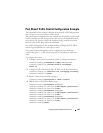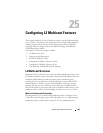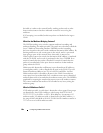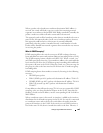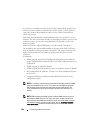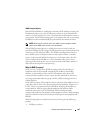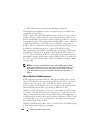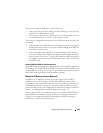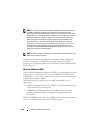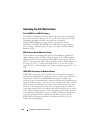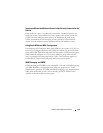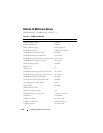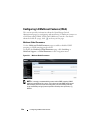
Configuring L2 Multicast Features 809
There are two types of MVR ports: source and receiver.
• Source port is the port where multicast traffic is flowing to. It has to be the
member of so called multicast VLAN.
• Receiver port is the port where listening host is connected to the switch. It
can be the member of any VLAN, except multicast VLAN.
There are two configured learning modes of the MVR operation: dynamic and
compatible.
• In the dynamic mode MVR learns existent multicast groups by parsing the
IGMP queries from router on source ports and forwarding the IGMP joins
from the hosts to the router.
• In the compatible mode MVR does not learn multicast groups, but they
have to be configured by administrator and protocol does not forward joins
from the hosts to the router. To work in this mode the IGMP router has to
be configured to transmit required multicast streams to the network with
the MVR switch.
Enabling MVR and IGMP on the Same Interface
MVR and IGMP snooping operate independently and can both be enabled on
an interface. When both MVR and IGMP snooping are enabled, MVR listens
to the IGMP join and report messages for static multicast group information,
and IGMP snooping manages dynamic multicast groups.
When Are L3 Multicast Features Required?
In addition to L2 multicast features, the switch suports IPv4 and IPv6
multicast features. You configure the IPv4/IPv6 multicast features if the
switch functions as a multicast router that can route multicast traffic between
VLAN routing interfaces. In this case, you must enable a multicast routing
protocol on the switch, such as PIM-SM. For information about L3 multicast
features, see "Managing IPv4 and IPv6 Multicast" on page 1337.
If the switch functions as a multicast router, it is possible to enable IGMP so
that IGMP forwards multicast traffic for directly connected hosts between
VLANs. It is recommended that IGMP snooping and MLD snooping be
disabled in L3 multicast routed networks.



